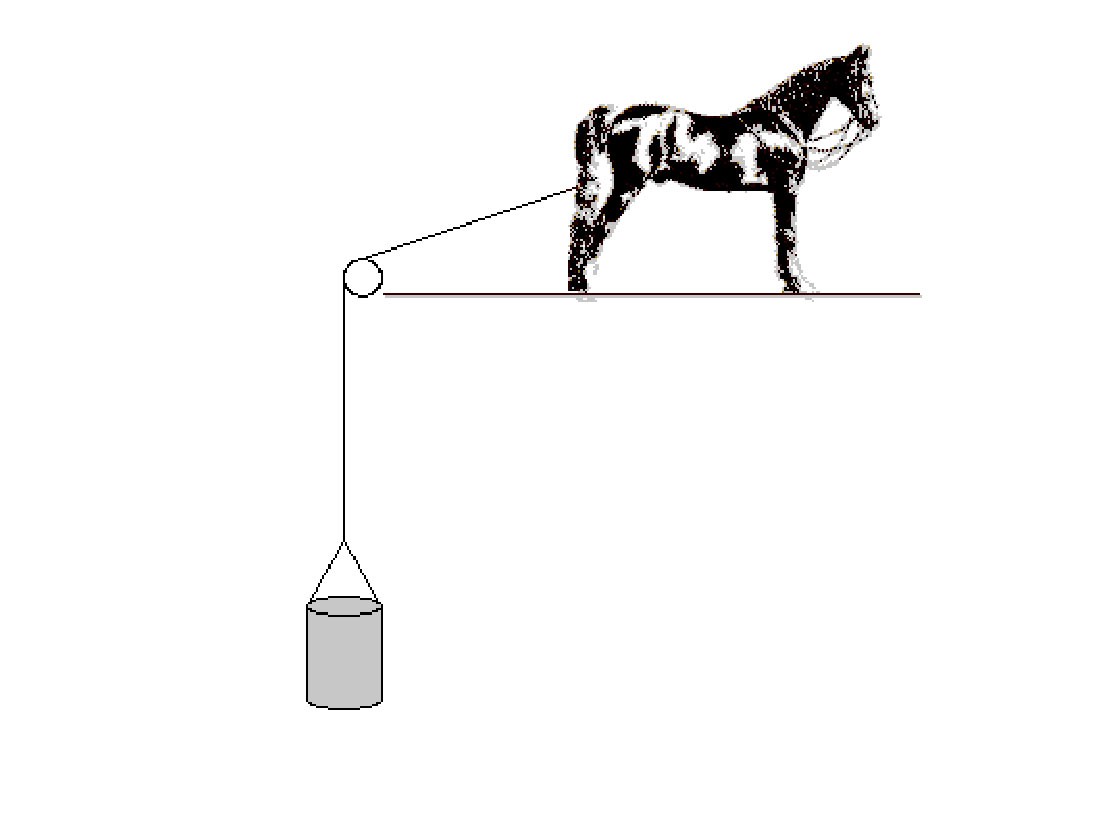
HORSEPOWER
And
TORQUE
HORSEPOWER
The term horsepower was invented by the engineer James Watt. Watt lived from 1736 to 1819 and is most famous for his work on improving the performance of steam engines. Watt was working with ponies lifting coal at a coal mine, and he wanted a way to talk about the power available from one of these animals. He found that, on average, a mine pony could do 22,000 foot-pounds of work in a minute. He then increased that number by 50 percent and pegged the measurement of horsepower at 33,000 foot-pounds of work in one minute.
What horsepower means is this: In Watt's judgement, one horse can do 33,000 foot-pounds of work every minute. So, imagine a horse raising coal out of a coal mine as shown above. A horse exerting 1 horsepower can raise 330 pounds of coal 100 feet in a minute, or 33 pounds of coal 1,000 feet in one minute, or 1,000 pounds 33 feet in one minute. You can make up whatever combination of feet and pounds you like. As long as the product is 33,000 foot-pounds in one minute, you have a horsepower.
Horsepower can be converted into other units as well. For example:
• 1 horsepower is equivalent to 746 watts. So if you took a 1-horsepower
horse and put it on a treadmill, it could operate a generator producing a continuous
746 watts.
• 1 horsepower (over the course of an hour) is equivalent to 2,545 BTU
(British thermal units). If you took that 746 watts and ran it through an electric
heater for an hour, it would produce 2,545 BTU (where a BTU is the amount of
energy needed to raise the temperature of 1 pound of water 1 degree F).
• One BTU is equal to 1,055 joules, or 252 gram-calories or 0.252 food
Calories. Presumably, a horse producing 1 horsepower would burn 641 Calories
in one hour if it were 100-percent efficient.
TORQUE
In the automotive world, lots of things move in circles rather than in straight
lines. Think of the wheels or engine. Some of the above concepts behave differently
and use different names. However, they relate to one another in the same way.
Distance is no longer feet or meters, it is revolutions measured in radians.
Speed is revolutions (or radians) over time instead of distance over time, for
example, revolutions/minute (RPM) or radians/sec. Mass is called inertia. We
still need some kind of "push" to get something spinning. Instead
of force, we have torque which is "twisting" force so to speak. Like
force, torque must be applied to get something to spin faster or slower (accelerate).
Torque is measured by the amount of force applied tangentially at a given distance
and is given units of force * distance. In the metric system, we would use Newton*meter
(N*m). In the US, we would use pound*feet (lbs*ft). For some strange reason
we usually say "foot pound" instead of "pound feet" but
use both lbs*ft and ft*lbs. Think of a wrench. We pull on the handle to turn
the bolt. The longer the wrench, the more torque exert on the bolt with the
same amount of force.